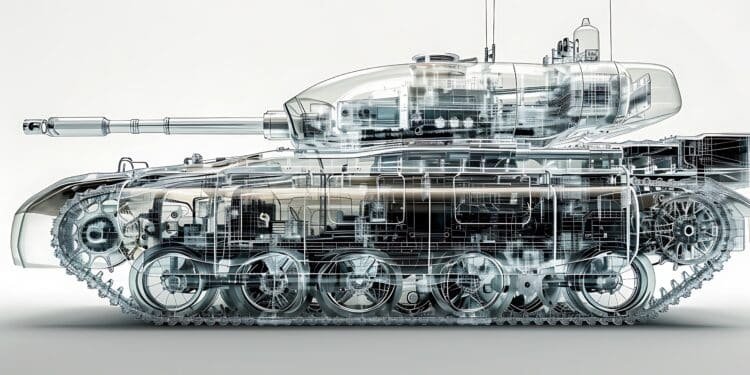In a global landscape increasingly defined by geopolitical tensions and military conflicts, the demand for metals critical to modern warfare has undergone a dramatic transformation. This shift has exposed significant vulnerabilities in Western supply chains, according to prominent mining industry figure Robert Friedland, who warns that the United States and its allies are ill-prepared for these new realities.
A Wake-Up Call for Western Governments
Robert Friedland, the veteran mining entrepreneur who co-chairs Ivanhoe Mines, believes Western governments have only recently begun to recognize the severity of their strategic mineral deficiencies after decades of neglect. “Everyone in the American government — at the highest level — is completely concerned with the supply chain, and critical raw materials,” Friedland stated in a recent interview, emphasizing the urgency felt within American policy circles.
The U.S.-Canadian dual citizen delivered a stark assessment of America’s current position: “They don’t have any of the metals that modern warfare requires.” This blunt declaration from one of the mining industry’s most influential voices underscores how China’s dominance of critical mineral supply chains threatens not just Western industrial capabilities but potentially America’s military supremacy.
The Trump administration has not been idle in the face of these challenges. Since taking office in January, President Trump has issued multiple executive orders focused on minerals, aiming to bolster domestic mining operations and expand deep-sea extraction capabilities. These policy initiatives reflect growing recognition that mineral security has become inseparable from national security.
The Convergence of Military and Green Energy Demands
What makes the current situation particularly challenging is the convergence of two major drivers of metals demand: military requirements and the global transition to renewable energy. Friedland, whose Ivanhoe Mines is a significant copper producer, points out that this simultaneous pressure creates unprecedented demand dynamics.
“The military aspect is demanding a lot of the same metals, if not exactly the same metals, that the greening of the world economy also needs,” Friedland explained. This overlap is especially evident in copper, extensively used in electrical wiring for both military applications and renewable energy infrastructure like electrical grids and solar panels.
The overlapping demand from defense and clean energy sectors has triggered what industry observers describe as a “race for resources” among major mining corporations. Leading companies including BHP, Glencore, and Barrick Mining are aggressively pursuing strategies to develop new copper mines or acquire existing operations, driven by projections of a substantial supply shortage expected to materialize within the next decade.
Quantifying Military Metal Demand
While precise figures remain difficult to establish due to national security classifications surrounding weapons stockpiles, industry analysts have attempted to quantify the military contribution to metals demand. Jon Barnes, a copper analyst at market intelligence firm Project Blue, estimates that higher military spending generates additional copper demand of approximately 500,000 tonnes annually, representing about 1.5 percent of global annual demand.
Russia’s ongoing war in Ukraine has served as a sobering case study, revealing that Western ammunition stockpiles were “far too low,” particularly for artillery shells. The United States has responded by dramatically scaling up production capabilities. “US production of 155mm standard artillery shells doubled last year, and will double again this year, both to supply Ukraine and to replenish strategic reserves,” Barnes noted. Each of these standard artillery shells contains up to one kilogram of copper, typically in the form of brass—an alloy combining copper and zinc—which is commonly used in bullets and artillery shells.
David Goldman, who heads trading at Novion Global brokerage, offers a more aggressive estimate of military-driven copper demand growth. Goldman suggests that increasing defense budgets and rearmament efforts are expanding copper requirements from Western military establishments by between 15 and 18 percent annually. He characterizes this military demand as a “critical factor underpinning the metal’s market tightness and long-term demand outlook.”
The Strategic Metals Landscape
The modern battlefield requires far more than traditional industrial metals. Advanced weapons systems, surveillance equipment, and communication technologies depend on an array of specialized materials, many of which have limited production sources outside of China.
Modern military drones and satellites deployed in combat zones incorporate numerous niche metals. The ground infrastructure supporting these systems—including stable power supplies and massive data servers necessary for operation—requires many of the same materials. The aerospace industry uses the rare earth metal scandium, while beryllium serves as a lightweight component in fighter jet construction. Semiconductors, essential to virtually all modern military electronics, often contain gallium.
Other critical materials include graphite and germanium, both vital components in advanced weapons systems. Graphite is essential for various military applications including missile systems and batteries for portable electronics, while germanium is used in infrared optical technologies, night vision equipment, and specialized electronics.
America’s Dwindling Strategic Reserves
The situation appears even more concerning when examining America’s strategic mineral stockpiles. A February report from the Carnegie Endowment think tank revealed that mineral inventories in the U.S. National Defense Stockpile have significantly decreased since the 1950s. The current reserves would cover less than half of the projected military demand in a hypothetical one-year conflict scenario.
This assessment paints a troubling picture of Western preparedness for sustained military operations in an era of heightened geopolitical competition. The strategic minerals shortage stands in stark contrast to the Cold War era, when the United States maintained robust stockpiles of critical materials as a matter of national security policy.
Global Conflicts Expose Critical Shortages
The current geopolitical landscape features numerous active conflicts that have further strained global supply chains for critical metals. From Ukraine to Kashmir, ongoing military confrontations have not only increased immediate demand for traditional metals such as copper for ammunition but have also highlighted vulnerabilities in the supply of specialized materials required for advanced weapons systems.
These conflicts have served as real-world stress tests for defense industrial bases, revealing bottlenecks and dependencies that had previously remained theoretical concerns. The practical experience of sustained high-intensity warfare in Ukraine has forced Western defense planners to reevaluate assumptions about material requirements and stockpile adequacy.
China’s Dominant Position
While not explicitly detailed in Friedland’s comments, China’s overwhelming dominance in critical minerals processing represents perhaps the most significant challenge to Western security interests. China controls processing capacity for numerous metals essential to both military applications and the green energy transition, creating a strategic vulnerability that military planners increasingly view with alarm.
This dominance extends beyond rare earth elements to include processing capabilities for copper, cobalt, lithium, and numerous other materials essential to advanced military systems. The concentration of these capabilities within a strategic competitor has elevated what might otherwise be considered commercial concerns to matters of national security.
Industry Response and Future Outlook
The mining industry has begun responding to these converging pressures, though developing new mines involves lengthy timelines often measured in decades rather than years. Major mining companies are accelerating exploration activities, particularly for copper, while governments are streamlining permitting processes for projects deemed strategically important.
For copper specifically, the demand outlook appears robust from both military and civilian sectors. Electrical vehicles require substantially more copper than traditional internal combustion engine vehicles, while renewable energy infrastructure is significantly more copper-intensive than conventional power generation. Military demand, while smaller in absolute terms, adds another growth dimension to an already tight market outlook.
Strategic Implications
The minerals challenge described by Friedland represents more than a commercial opportunity for mining companies. It constitutes a fundamental national security concern that intersects with energy security, industrial policy, and military readiness. Western nations accustomed to technological superiority on the battlefield now face the possibility that material constraints could limit their military capabilities.
As conflicts continue in Ukraine and potentially other regions, the pressure on critical mineral supply chains will likely intensify. Military planners, mining executives, and government officials are increasingly coordinating their approaches to address what has become recognized as a vital strategic vulnerability.
In this new era of great power competition, access to and control of critical minerals may prove as strategically significant as energy resources were in previous decades. Friedland’s warning serves as a reminder that military power ultimately rests on industrial foundations. Foundations that require secure access to an increasingly complex array of mineral resources.
Acknowledgment: This article was written with the help of AI, which also assisted in research, drafting, editing, and formatting this current version.







